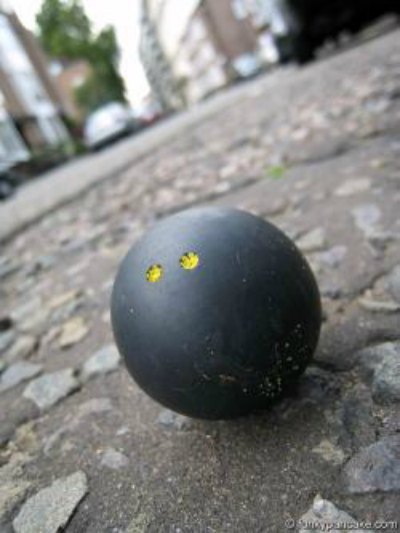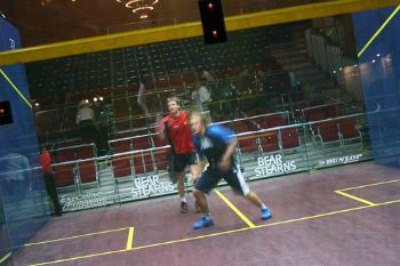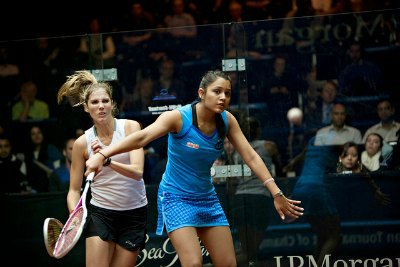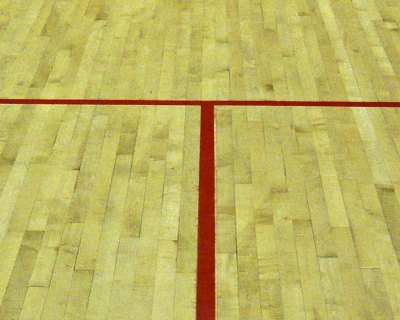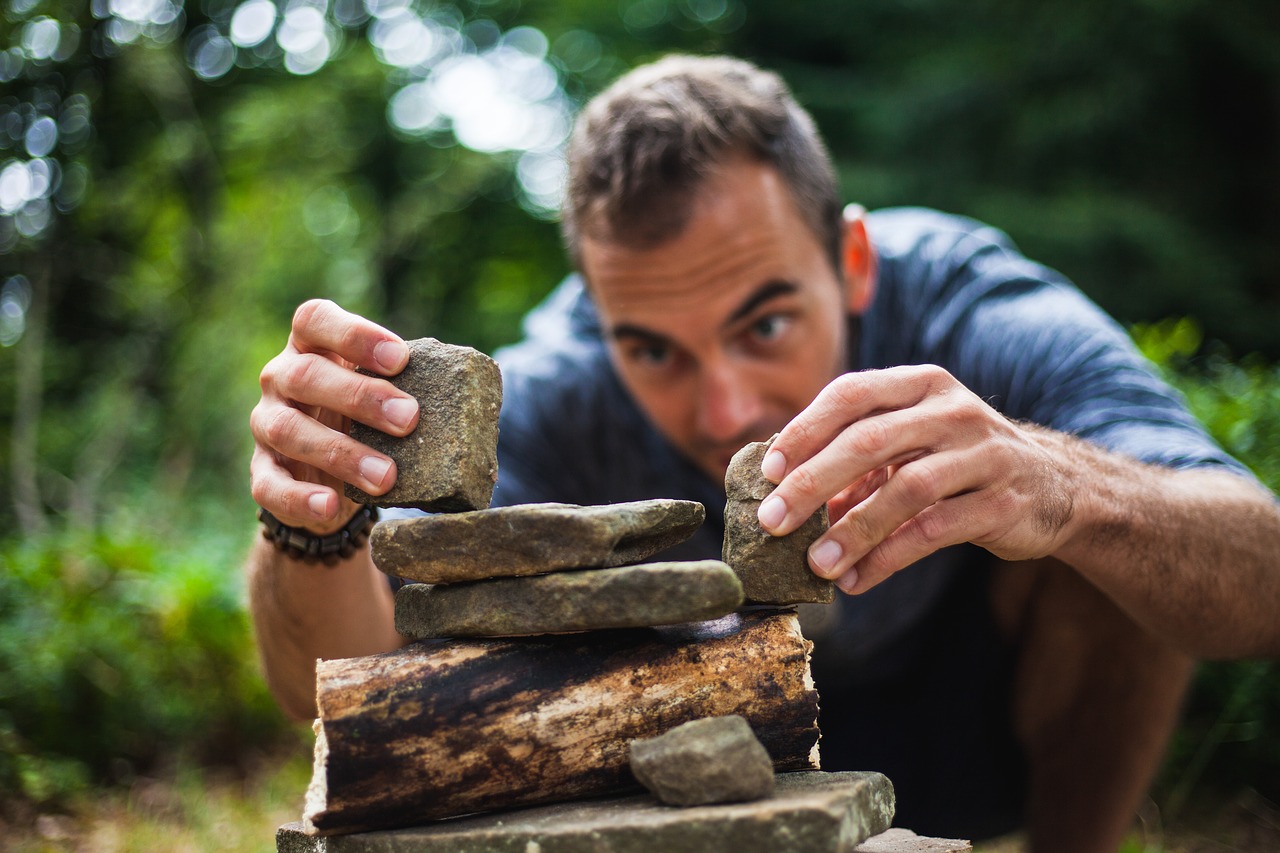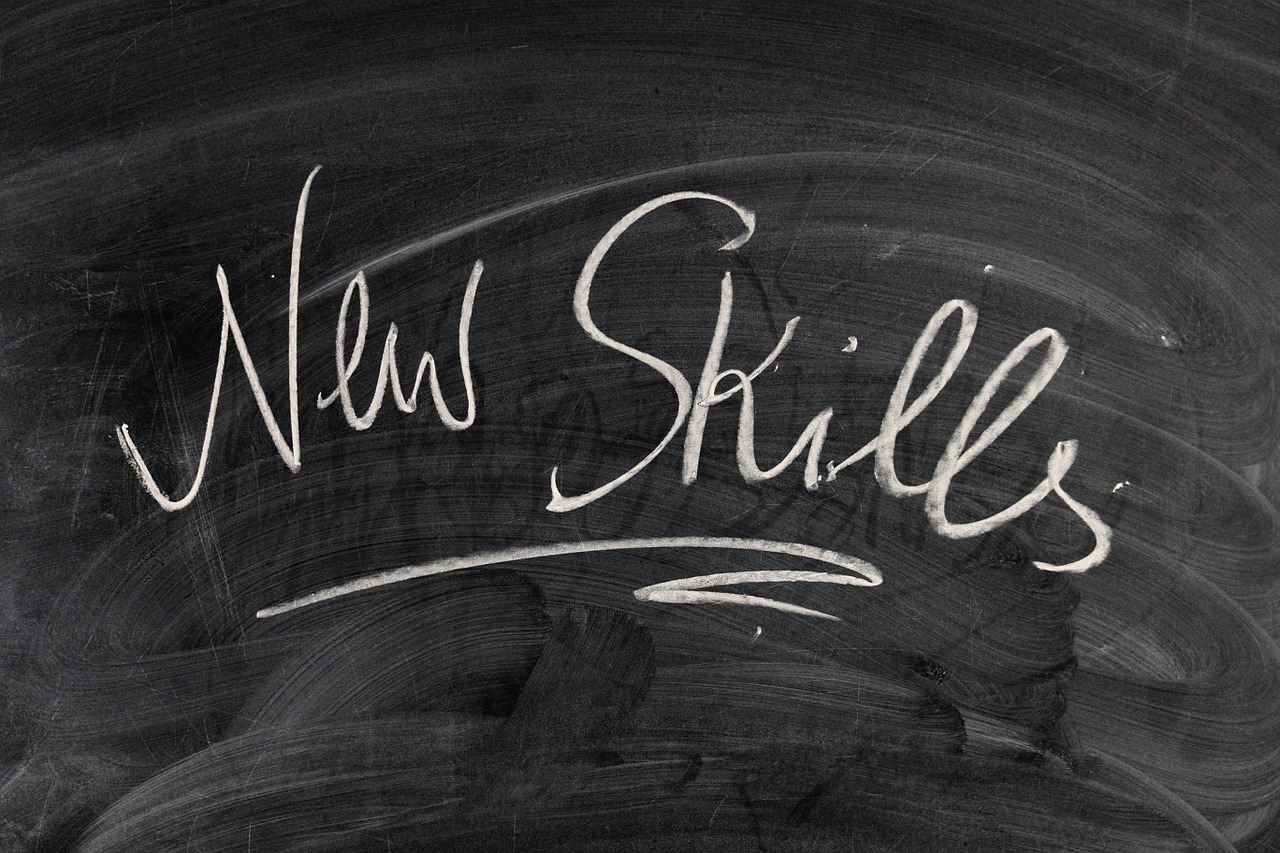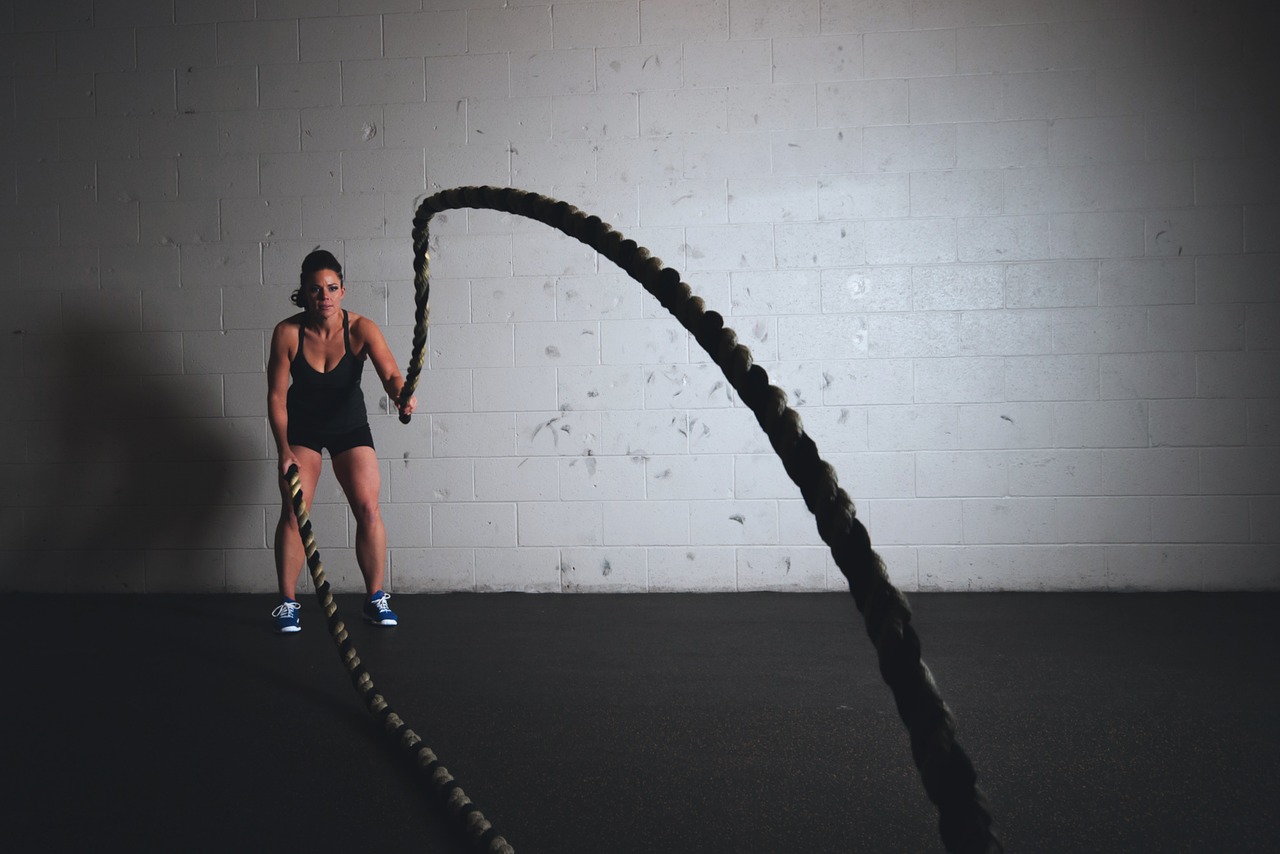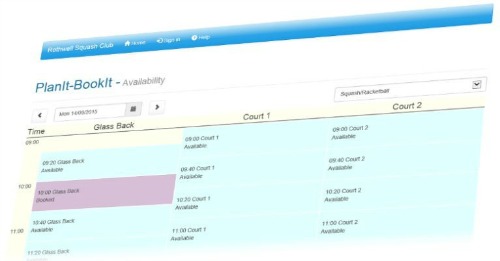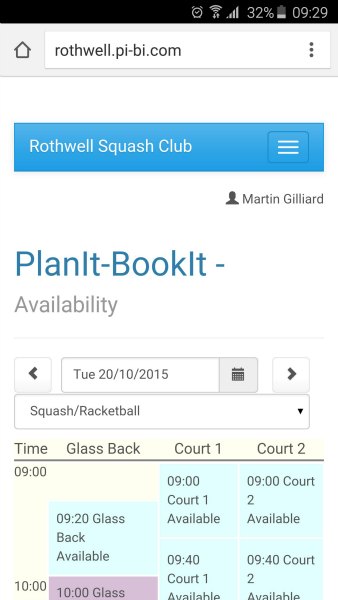How to Improve Squash Skills?
Improving squash skills requires practice, dedication, and a willingness to learn. Here are some tips to help improve your squash skills:
- Play with a variety of players: Playing with different players can help you improve your game by exposing you to different playing styles and strategies. It can also help you identify areas of weakness in your game and work on them[1].
- Practice on your own: Practicing on your own can help you improve your technique and develop muscle memory for different shots. Spend time on the court practicing specific shots or techniques until you feel comfortable with them[1].
- Get fit: Squash is a physically demanding sport, and being in good shape can help you play better and avoid injury. Focus on improving your endurance, strength, and agility through regular exercise and training[1].
- Experiment with different shots: Don’t be afraid to try new shots and strategies during practice matches. Experimenting with different shots can help you develop your own playing style and improve your overall game[2].
- Focus on accuracy: Accuracy is more important than power in squash. Practice hitting the ball to the back of the court from anywhere using the height of the ball instead of raw power to drive it to the back[2].
- Work on your technique: Improving your technique is essential to becoming a better squash player. Watch instructional videos on YouTube or other websites to learn the proper form and technique for different shots such as boasts, drop shots, and serves.
Better Boasts
Improve Your Drop Shots
The Serve
Squash Tactics
Squash is a fast-paced and exciting racket sport that requires skill, strategy and fitness. Whether you are a beginner or a seasoned player, there is always room for improvement in your squash game. Here are some tips and tricks that can help you take your squash skills to the next level.
1. Understand the Squash Fundamentals
Before you can master the advanced techniques, you need to have a solid grasp of the squash basics. This includes:
- The squash rules: Learn the scoring system, the service rules, the let and stroke calls, and the basic etiquette of the game. You can find a summary of the squash rules here.
- The squash grip: Hold the racket with a relaxed but firm grip, using your thumb and index finger to form a V-shape on the handle. Keep your wrist straight and avoid gripping too tightly or loosely.
- The squash swing: Use a smooth and fluid motion to swing the racket, starting from a backswing position and finishing with a follow-through. Keep your elbow up and your racket head open. Use your shoulder and forearm muscles to generate power and control.
- Squash footwork: Move around the court with agility and efficiency, using small steps and lunges to reach the ball. Use the split step to change direction quickly and balance yourself before hitting the ball. Recover to the T (the center of the court) after every shot.
2. Control the Middle of the Court
One of the most important squash strategies is to dominate the T and force your opponent to the corners. By controlling the middle of the court, you can:
- Reduce the distance you have to cover to reach the ball
- Cut off your opponent’s angles and options
- Put pressure on your opponent and create opportunities to attack
To control the T, you need to hit good length shots that land deep in the back corners, and keep the ball tight to the side walls. You also need to volley as much as possible, especially on the return of serve, to prevent your opponent from taking the T.
3. Learn How to Serve Effectively
The serve is the first shot of every rally, and it can set the tone for the rest of the point. A good serve can:
- Disrupt your opponent’s rhythm and confidence
- Force your opponent to hit a weak return
- Give you an advantage in taking the T
The best serve for squash is a high lob serve that hits the side wall near the back corner, making it difficult for your opponent to volley or return. To execute this serve, you need to aim for a spot on the front wall that is slightly above the service line, and hit the ball with a bit of underspin. You also need to mix up your serves occasionally, by hitting low, hard, or angled serves, to keep your opponent guessing.
4. Master the Return of Serve
The return of serve is the second most important shot in squash, as it can determine who gets the upper hand in the rally. A good return of serve can:
- Neutralize your opponent’s serve and put you on equal footing
- Send your opponent to the back and take the T for yourself
- Create an opening for you to attack and win the point
The best way to return a serve is to volley it straight and deep, aiming for the back corner on the same side as the serve. This will prevent your opponent from cutting off your shot and taking the T. To volley the serve, you need to stand close to the T, watch the ball carefully, and use a short and compact swing. You also need to vary your returns occasionally, by hitting cross-court, drop, or boast shots, to surprise your opponent.
5. Establish Good Length
Length is the foundation of squash, as it allows you to control the rally and create openings for attack. A good length shot is one that lands deep in the back corner, preferably with a low bounce. To hit a good length shot, you need to:
- Aim for a spot on the front wall that is about a racket’s length above the tin
- Hit the ball with a moderate pace and a slight topspin
- Keep the ball close to the side wall and away from the middle
- Adjust your swing and angle according to your position and your opponent’s position
6. Keep the Ball Tight
Keeping the ball tight to the side wall is another key squash skill, as it makes it harder for your opponent to hit a good shot. A tight ball can:
- Limit your opponent’s options and angles
- Force your opponent to hit the ball from a difficult position
- Increase the chances of your opponent hitting the tin or the wall
To keep the ball tight, you need to:
- Hit the ball with a flat or slightly open racket face
- Hit the ball with a low to medium pace and a slight slice
- Aim for a spot on the front wall that is close to the side wall
- Avoid hitting the ball too high or too low on the front wall
7. Attack Loose Balls
A loose ball is one that bounces away from the side wall, giving you an opportunity to attack and win the point. A good attack shot can:
- Catch your opponent off guard and out of position
- End the rally quickly and save your energy
- Boost your confidence and morale
The most common attack shots in squash are the drop shot and the kill shot. A drop shot is a soft and delicate shot that lands close to the front wall, preferably with a low bounce. A kill shot is a hard and low shot that hits the front wall near the tin, preferably with a high bounce. To hit a good attack shot, you need to:
- Watch the ball carefully and anticipate its bounce
- Move quickly and get in front of the ball
- Use a short and sharp swing and a closed racket face
- Hit the ball with a high or low pace and a slight cut
- Aim for a spot on the front wall that is close to the tin
8. Lift the Ball When You’re in Trouble
Sometimes, you may find yourself in a defensive position, where you have to hit the ball from the back corner, under pressure, or out of position. In such situations, the best thing to do is to lift the ball high and deep, to buy yourself some time and space. A good defensive shot can:
- Relieve the pressure and reset the rally
- Give you a chance to recover and get back to the T
- Frustrate your opponent and force them to hit a weak shot
To hit a good defensive shot, you need to:
- Use a high and open racket face
- Use a long and smooth swing and a relaxed grip
- Hit the ball with a low pace and a lot of topspin
- Aim for a spot on the front wall that is high and close to the side wall
9. Learn Some Deception
Deception is the art of misleading your opponent with your body language, racket movement, or shot selection. A good deceptive shot can:
- Confuse your opponent and make them guess wrong
- Create an opening for you to hit a winning shot
- Add some flair and fun to your game
The most common deceptive shots in squash are the flick, the hold, and the dummy. A flick is a quick wrist movement that changes the direction of the ball at the last moment. A hold is a pause in your swing that delays the timing of your shot and makes your opponent wait. A dummy is a fake swing that makes your opponent think you are going to hit the ball, but then you let it bounce and hit it on the second bounce. To hit a good deceptive shot, you need to:
- Have a good racket preparation and a smooth swing
- Have a good eye contact and a neutral body language
- Have a good timing and a good touch
- Have a good variety and a good balance
10. Practice and Play
The best way to improve your squash skills is to practice and play regularly, with a purpose and a plan. You can:
- Practice solo or with a partner, using drills and exercises that focus on specific aspects of your game
- Play matches or games with different opponents, using different rules and formats that challenge your skills and strategies
- Record and review your performance, using video analysis or feedback from a coach or a friend
- Set and track your goals, using a journal or an app
By following these tips and tricks, you can improve your squash skills and enjoy the game more. Remember to have fun, be respectful, and play fair.
Citations:
[1] https://blog.squashskills.com/-/3-things-you-can-do-to-become-a-better-squash-player-205/
[2] https://www.reddit.com/r/squash/comments/lkoenv/how_do_i_get_better/
Go From How To Improve Squash Skills To The Wonderful Game Of Squash










